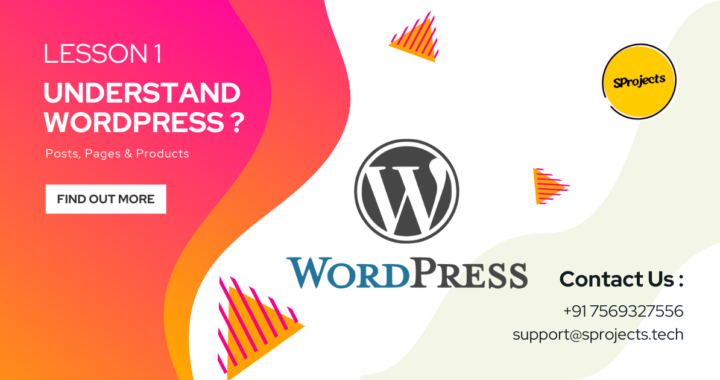Understanding WordPress: Posts, Pages & Products
When you first dive into WordPress, understanding the differences between posts, pages, and products can be a bit confusing. Each has its specific purpose and use case within a WordPress site. Here’s a detailed guide to help you differentiate and effectively use them.
1. Posts
Definition: Posts are entries listed in reverse chronological order on your blog. They are typically used for regular, time-sensitive content.
Use Cases:
– Blog articles
– News updates
– Announcements
Key Features:
– Categories and Tags: Posts can be organized using categories and tags, making it easier for users to find related content.
– Date and Time: Posts have timestamps, which are crucial for content that benefits from being current or recent.
– Author Information: Posts display the author’s name, which is useful for multi-author blogs.
– Comments: Posts often allow readers to leave comments, fostering interaction and discussion.
– RSS Feeds: Posts are included in your site’s RSS feed, allowing readers to subscribe and receive updates.
How to Create a Post:
1. Go to the WordPress Dashboard.
2. Navigate to Posts > Add New.
3. Enter a title and write your content in the editor.
4. Assign categories and tags as needed.
5. Add any additional features like images or links.
6. Click Publish to make your post live.
2. Pages
Definition: Pages are static and are used for content that doesn’t change frequently. They are not listed by date and don’t use categories or tags.
Use Cases:
– About Us
– Contact Information
– Services
– Privacy Policy
Key Features:
– Hierarchy: Pages can be nested, meaning you can create sub-pages (child pages) under a main page (parent page).
– Static Content: Pages are ideal for timeless content that you want to be easily accessible.
– Comments: By default, comments are often disabled on pages, though this can be changed.
– Custom Templates: Many themes offer custom templates specifically for pages to give them a unique look.
How to Create a Page:
1. Go to the WordPress Dashboard.
2. Navigate to Pages > Add New.
3. Enter a title and add your content in the editor.
4. Assign a parent page if needed to create a hierarchy.
5. Use any custom page templates available from your theme.
6. Click Publish to make your page live.
3. Products
Definition: Products are used specifically in e-commerce websites to sell physical or digital goods. They require an e-commerce plugin like WooCommerce.
Use Cases:
– Physical items (e.g., clothing, electronics)
– Digital downloads (e.g., eBooks, software)
– Services (e.g., consultations, custom work)
Key Features:
– Product Categories and Tags: Similar to posts, products can be organized using categories and tags.
– Product Attributes: Variations like size, color, or material can be added.
– Inventory Management: Track stock levels and manage inventory directly within WordPress.
– Pricing and Sales: Set regular and sale prices, and manage discounts and coupons.
– Shipping Options: Define shipping methods and rates for physical products.
– Customer Reviews: Enable customer reviews and ratings for products.
How to Create a Product (with WooCommerce):
1. Install and activate WooCommerce.
2. Go to the WordPress Dashboard.
3. Navigate to Products > Add New.
4. Enter the product name and description.
5. Set the product data (e.g., simple, variable, grouped) and enter pricing details.
6. Add product categories, tags, and attributes.
7. Upload product images and galleries.
8. Configure inventory, shipping, and other options.
9. Click Publish to make your product available for purchase.
Conclusion
Understanding the differences between posts, pages, and products is crucial for effectively managing your WordPress site.
– Posts are for regular, time-sensitive content.
– Pages are for static, timeless information.
– Products are for items or services you want to sell online.
By using each correctly, you can ensure your content is organized and presented in the best way possible for your audience.
